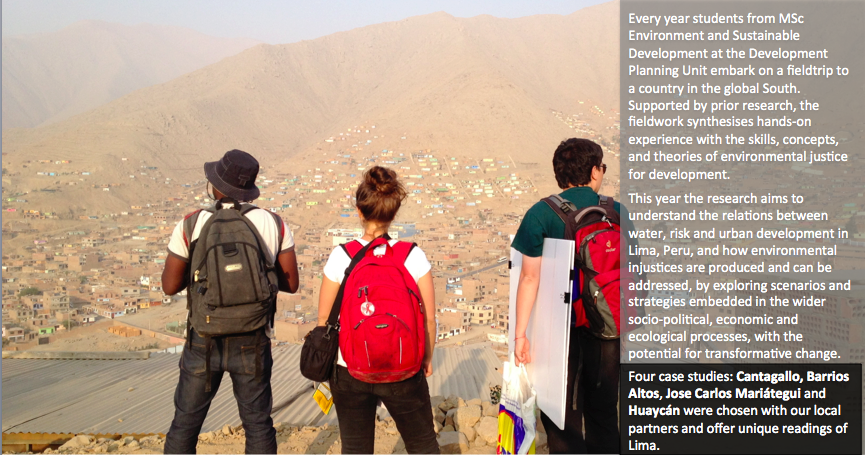Each
case study on the field trip provides a unique lens through which we learn
about the wider city of Lima. By exploring power relations, the challenges facing
citizens, and the strategies they are adopting at the barrio
(neighbourhood) level, we can gain insight into the wider drivers and dynamics
of urban change.
Cantagallo is changing at an accelerated rate. The area is
divided into three distinct levels: referred to as levels one, two and three. Each level has a
distinct socio-economic and spatial character, and risk is manifested differently
in each.
Whilst
the negotiations with residents over their relocation to make way for the Via
Parque Rimac infrastructure and urban greening project are ongoing, the developers
have begun the process of displacing residents and services. The most imminent developments are
leading to the relocation of a row of houses across levels two and three, and a
school, into an open space alongside level one.
Land in
Cantagallo is in short supply but the original school has been closed, and construction
has begun on a new temporary structure in one of the few public spaces in the area, where the school will be located in the short-term.
 |
| One week ago this site was a community sports pitch in Cantagallo. The new structure will temporarily hold the displaced school. Photo by Chris Yap |
Some of
the residents in level one told students that community members facing imminent
displacement by the infrastructure project are considering occupying the thin,
steep, green strip of land that divides levels one and two; where conditions would be highly precarious. The incremental development into the Cantagallo district
will force the remaining residents to live in even higher density housing, as access to services and infrastructure become increasingly strained.
Whilst
this process of displacement within the area is an isolated case, the
drivers of the relocation, the residents' strategy of occupying unsuitable, unsafe land,
and the short-term thinking by the Municipality-LAMSAC in building a temporary,
costly structure to relocate the primary school, mimics wider challenges and
processes at the city-level.
However, whilst
exploring social, economic and spatial injustices at the barrio level
offer insight into the macro challenges facing the city, the barrio is
not a microcosm of the city. The ways in which citizens interact with state and
private actors, the challenges they face in accessing secure housing, services
and infrastructure, and their agency, must be reexamined and
reinterpreted at every scale, from the household to the city-level. By exploring social and spatial justice at the barrio-level, we can identify scalable strategies and imagine scenarios for more equitable urban development for the wider city.





